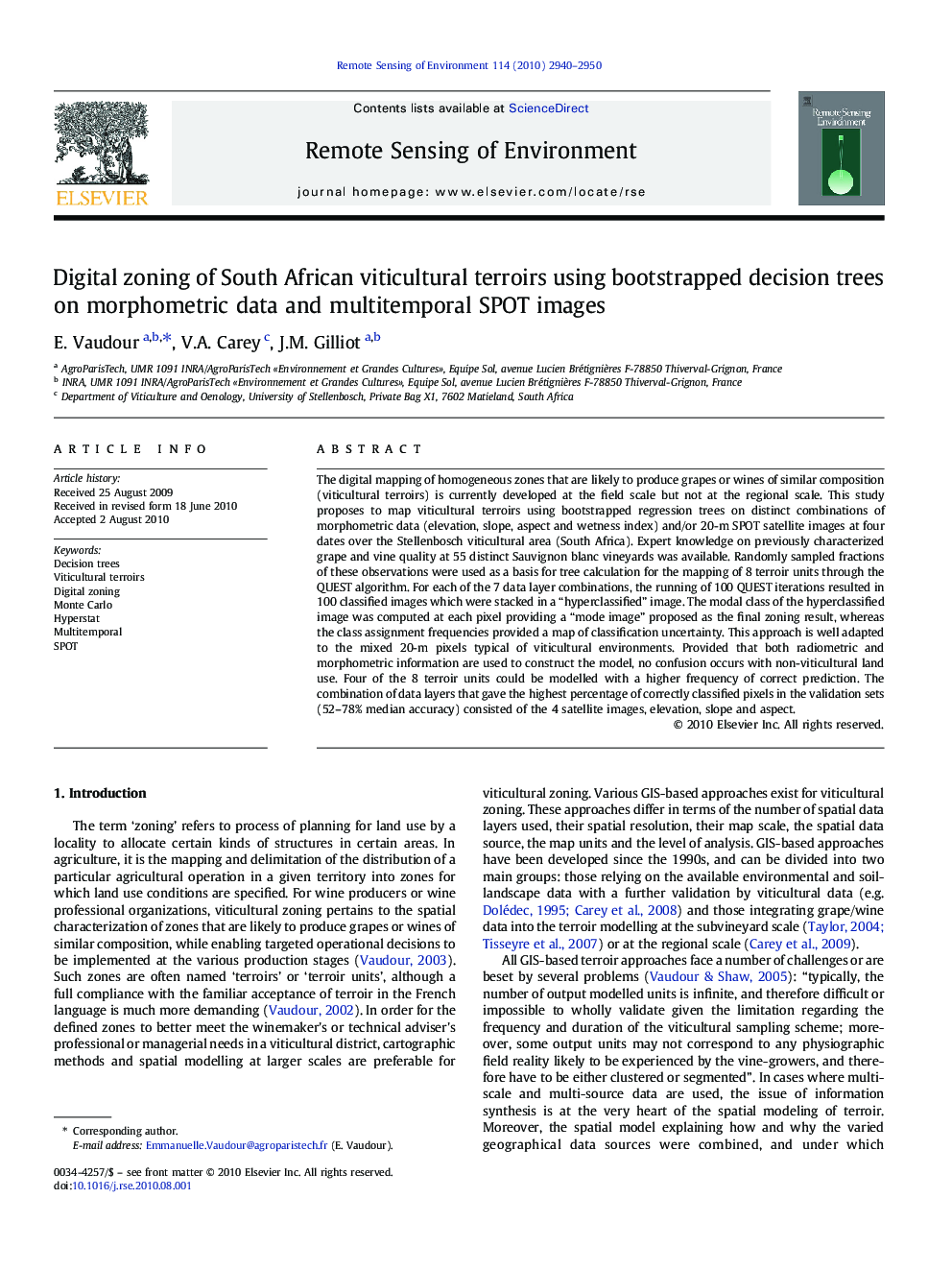| Article ID | Journal | Published Year | Pages | File Type |
|---|---|---|---|---|
| 4459598 | Remote Sensing of Environment | 2010 | 11 Pages |
Abstract
The digital mapping of homogeneous zones that are likely to produce grapes or wines of similar composition (viticultural terroirs) is currently developed at the field scale but not at the regional scale. This study proposes to map viticultural terroirs using bootstrapped regression trees on distinct combinations of morphometric data (elevation, slope, aspect and wetness index) and/or 20-m SPOT satellite images at four dates over the Stellenbosch viticultural area (South Africa). Expert knowledge on previously characterized grape and vine quality at 55 distinct Sauvignon blanc vineyards was available. Randomly sampled fractions of these observations were used as a basis for tree calculation for the mapping of 8 terroir units through the QUEST algorithm. For each of the 7 data layer combinations, the running of 100 QUEST iterations resulted in 100 classified images which were stacked in a “hyperclassified” image. The modal class of the hyperclassified image was computed at each pixel providing a “mode image” proposed as the final zoning result, whereas the class assignment frequencies provided a map of classification uncertainty. This approach is well adapted to the mixed 20-m pixels typical of viticultural environments. Provided that both radiometric and morphometric information are used to construct the model, no confusion occurs with non-viticultural land use. Four of the 8 terroir units could be modelled with a higher frequency of correct prediction. The combination of data layers that gave the highest percentage of correctly classified pixels in the validation sets (52-78% median accuracy) consisted of the 4 satellite images, elevation, slope and aspect.
Related Topics
Physical Sciences and Engineering
Earth and Planetary Sciences
Computers in Earth Sciences
Authors
E. Vaudour, V.A. Carey, J.M. Gilliot,
